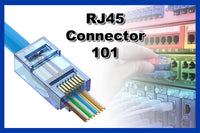Contents
Computer network is one of the greatest technological inventions in human’s history and it has a profound influence on people’s life. Before the invention of network, if you wanted to treat yourself a cloth, you had to walk down to the store. But today a click on the shopping website is enough to get what you want. If you’re a novice of networking, learning about the history of network will make you know better about how we go here step by step.
History of Network
The network has a fascinating history. To understand how essential the network is, it is necessary to learn about the origin of it.
Before 1960s
In 1950s, computers were very expensive and it was impossible that everyone owned one. But many processing systems allowed several people to share the computing resources at the same time. In the mid- to late-1950s, Time-Sharing System was first proposed. In Time-Sharing System, every computer user has a terminal consisting of a monitor and keyboard. These terminals are connected to the computer through the controlling route. But it was still not a complete computer network. This system cannot achieve computer-to-computer communications.

1960s
The origin of computer network can date back to 1960s, a time when the telephone network was the main network. Telephone network mainly uses circuit switching to convey data from the sender to a receiver. With the heating of cold war, the US wanted to found a complete communication network. So a concept of a new network was put forward and that is packet-switching network.
Paul Baran proposed the concept of "Message Block" and Donald Davies also had his idea on "Packet Switching". Packet switching is a way to divide data into packets, which will be transmitted over the network. Every time the device sends data to another, it will break the data to several pieces and choose the most efficient route. If one route is broken, it will choose other route to continue to transmit packets. Packet switching ensures data transmission not be interrupted due to network failure.
Larry Roberts had a plan about the first patch-switching network called ARPAnet, which can seen as the basic of modern Internet. And these patch switches were known as Interface Message Processors. Every computer connected to ARPAnet needs to be connected to a device called IMP.
1970s and 1980s
In the mid 1970s, many other packet-switching networks have brought into being such as ALOHAnet, Telenet, and Tymnet. APRAnet was a closed network. Every computer connected to ARPAnet needs to be connected to a device called IMP. The biggest problem of ARPAnet is the communication between IMP and other types of hosts, so “1822 Protocol” was then formulated. But this protocol cannot achieve simultaneous communication between multiple applicaions. To solve this problem, NCP protocol was created. In 1983, NCP was replaced by the more flexible TCP/IP protocol, which was the beginning of modern Internet.
In 1973, Robert Metcalfe proposed the principle of Ethernet, which was later developed to Local Area Network (LANs).
1990s
In the 1990s, Internet continued to develop and evolve. APRAnet has never existed and NSFNET became the main network to connect the US network with overseas network. In addition, in 1990, The World became the world’s first commercial Internet Service Provider (ISP) and commercial ISP business grew quickly. In 1991, a non-profit cooperation formed by Merit, IBM, and MCI took over NSFNET and renamed it as ANSNet.
The other main event in the 1990s was the release of the World Wide Web. World Wide Web helps provide millions of people worldwide with access to Internet at home or in business. The Web also boosts the development of various new applications such as streamed multimedia services and other information services.
History of Ethernet
The 1970s introduced Ethernet, which is a wired computer networking technology. In 1973, Bob Metcalfe at the Xerox Palo Alto Research Center created Ethernet working at 2.94 Mbps and it used thick copper coaxial-type cables. But it was not in commercial use. In 1983, Ethernet was standardized as IEEE 802.3 10Base5 Ethernet and initially became commercially available. In 1985, 10Base2 Ethernet standard was released. It was known as Thinnet because of the use of thin coaxial cables.
With the rapid development of Ethernet, it has gradually replaced other wired LAN technologies such as Token Ring Topology and ARCNET. Ethernet has still been the main LAN technology in the 1990s. With the rapid growing of computer network, Ethernet was highly needed at that time. In 1995, adopting the technology invented by Grand Junction Networks, Fast Ethernet can reach the maximum speed of 100 Mbit/s under new Ethernet standard. This standard allows data to transmit at 100Mbps over twisted-pair network cables or fiber optic cables. In 1998, Ethernet was upgraded to 1000 Mbit/s, which can be connected to high-performance devices. Ethernet is considered as a key technology of Internet and it has continued to be the most widely used technology in the foreseeable future.
About Ethernet Cables
To meet different bandwidth-intensive needs, there are different network cables including twisted-pair cables, fiber optic cables, and coaxial cables. Fiber optic cables are usually applied in long-distance network, but it has been more and more popular in recent years. Twisted pair cables are still the main cables used in network installation thanks to its easy operation and cost-effectiveness. In addition, copper wires can also support Power over Ethernet (PoE). Read more about fiber optic vs copper here.

You can choose Cat5, Cat5e, Cat6, Cat6a, Cat7, and Ca8 according to your own needs. And there are many network accessories in network cabling including RJ45 connectors, keystone jacks, crimping tools, and other network tools. By the way, Cat6 and Cat6a are more recommended for home and small business network.
For more information on this topic, you can keep up on our blogs. While VCELINK offers general and basic information for our customers and other visitors to the website, it’s not professional advice.






Be the first one to comment.
Leave a comment